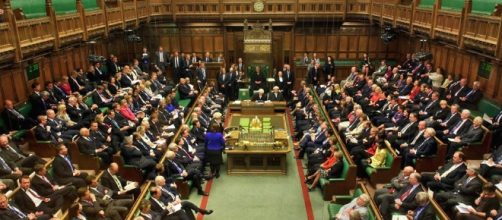This week’s events in Washington showed quite well how parliaments are battlefields. In the game of numbers which saw President Donald Trump defeated in trying to repeal the #Affordable Care Act, let us see how other parliaments have their own battles.
The red lines
The week also saw the terror attack at Westminster, the place of the British parliament, an important symbol of the country’s history. The House of Commons has seen its own bloody history and is a place where religion and politics often mixed in the past mix and as a result where the reigning sovereign cannot enter without the express permission of the House.
The British Lower House was where an important part of the Reformation took place and where Anglicanism was made the state religion. There is still a clear sign of those stormy times with the two redlines that separate the facing benches of the Government on the left of the Speaker and the Opposition on the left.
The distance between the two lines is wider than that of two swords to ensure that opposing politicians do not fight, in every sense of the word, in the House. In fact the two sides facing each other is a distinct sign of a confrontational form of parliamentarianism.
The Prime Minister and the Leader of the Opposition, an official title, sit facing each other and Question Time is often a highly charged series of questions meant to embarrass the government of the time.
Considering parliamentary votes, these are held by acclamation but any member may ask for a head count. In this case those for the vote YES go to one side of the Chamber and the NOs go to the other. In this case, any ruling parliamentarians deciding to vote against the Government must literally “cross the floor” as the action is known. This can often lead to the most dramatic episodes in parliamentary history.
It would have been easy to imagine such scene in Congress if the vote on the ACA had occurred.
Secrecy
In the case of the Italian Parliament, the country’s Constitution was drawn up after the end of World War 2 to avoid the possibility of the return of another dictatorship that had dragged the country into the conflict.
This is the major reason for the often byzantine and unusual regulations of parliamentary behaviour in Rome; one of these is the secret vote for Deputies and Senators.
In order to avoid undue pressure on these politicians by forces outside the parliament their votes are secret. This has two effects on the stability of the Italian parliamentary system.
The first is that the constituents never know how their representatives voted on any issue. The parliamentarians thus are not true representatives of their constituents and too often in the past have followed party orders rather than the interest of their electorates.
The second effect of the secret vote only contributes to the inherent stability of the Italian Parliament.
In the games of coalitions that the country's electoral system produces the secret vote had become a weapon for government politicians to vote against their own party. Often this is for petty internal party issues and not for national interest.
As a result these politicians can vote with impunity as it is not possible to know who voted against the government. This tactic was used successfully by 101 politicians in the last election for Italy’s President, which is voted by parliament, as government members refused to back the official candidate, one of which was former Italian Prime Minister and European Commissioner Romano Prodi.
The nickname for these seditious politicians is “franchi tiratori”, literally “snipers”.
Republicans
As we saw this week, even in these systems the Republicans would have had trouble passing their repeal of the ACA. In any case, each parliament is the result of that country’s history and leaders often lament the weak points of their systems.
But then no system is perfect and in the end in Democracy the final decision is always that of the citizens and this is as it always should be.

